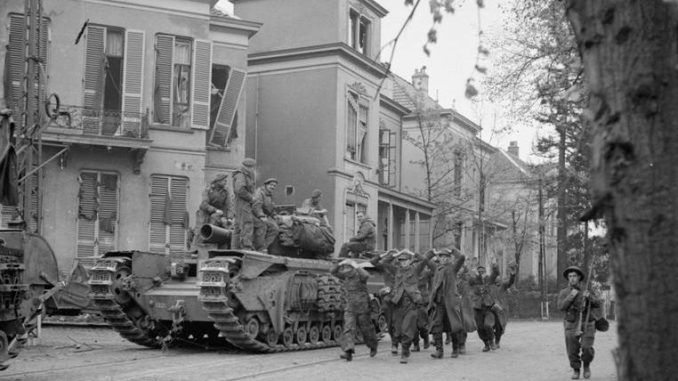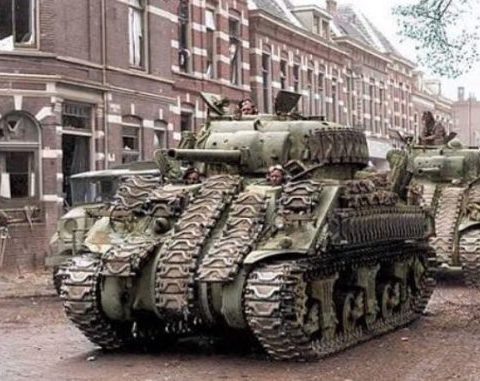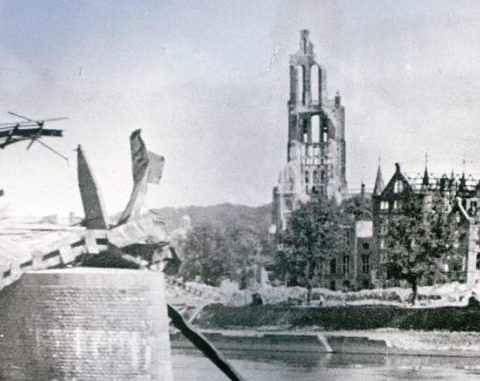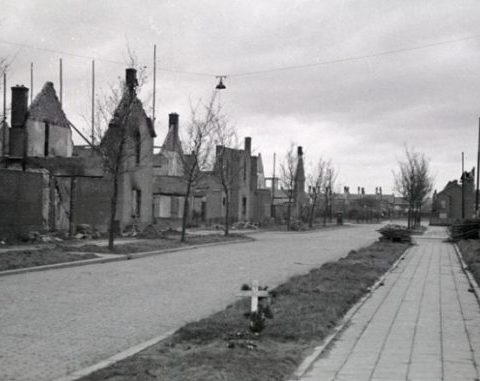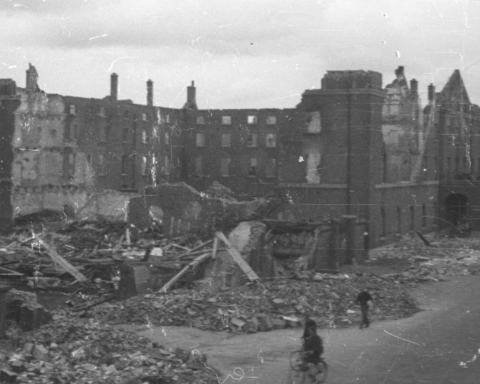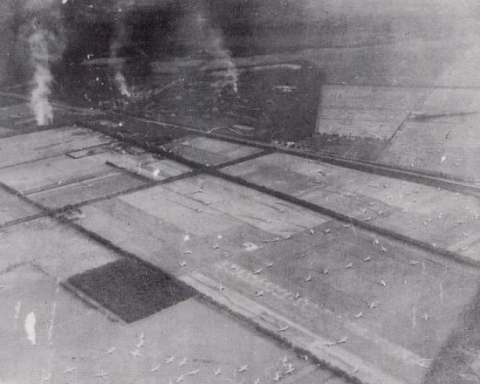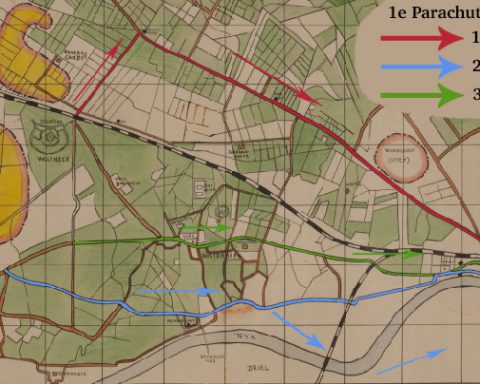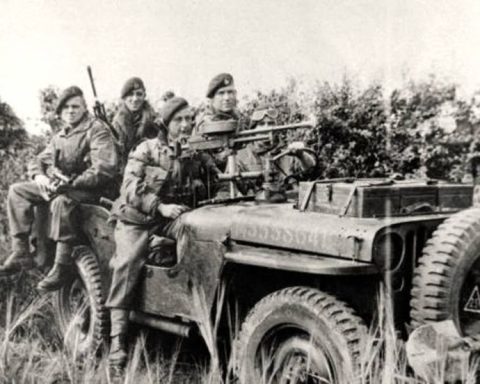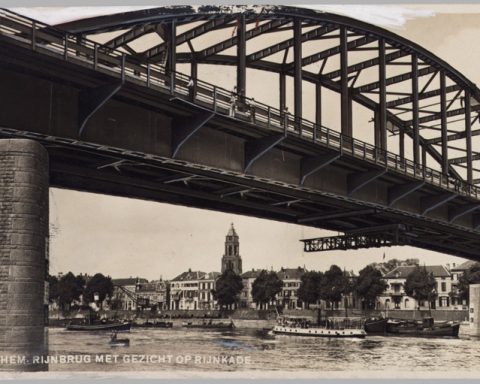In the night of 12 to 13 April 1945, British troops with amphibious vehicles from Westervoort crossed the IJssel to liberate Arnhem.
The German defense of the city was contracted at the Enka factory in the Kleefse Waard, east of the city. It took the Canadians almost all day to expel the troops that had entrenched themselves here.
The German defense of Arnhem was broken with this attack. Although there were occasional shots by retreating Germans, organized resistance to the British advance on Saturday April 14 was almost out of the question.
The fanatical volunteers of the Dutch SS division Landstorm still made a vicious counter-attack on the British positions with captured French Renault tanks. After heavy fighting they were finally beaten back. The French tanks were destroyed.
The British moved cautiously into the center of Arnhem to clean up the last sources of resistance.
Burning shell
The Polar Bears were active in the war from the D-Day landings. Arnhem was not the first city they liberated. The Canadians were used to being welcomed by enthusiastic residents after the fighting. This had happened in France, Belgium and the south of the Netherlands. But it was not like that in Arnhem.
Because Arnhem had been evacuated by the Germans during the Battle of Arnhem, the city that was liberated by the British was hauntingly empty.
In addition, Allied bombing raids on the Rhine Bridge and the massive artillery bombardment that the British had fired at the city had destroyed much of the city. Some houses were still on fire.
Canadian war correspondent Matthew Halton described Arnhem as “an abandoned, burning shell.” Veterans said after the war that walking around Arnhem felt like walking around in a grave.
The Polar Bears’ war diary reports that throughout the war the British did not encounter a city that had suffered more from the violence of war than Arnhem.
A soldier later recalled:
“It was spooky, such a deserted city. You felt you had no right to be there and someone was watching you in case you were doing something you weren’t allowed to.”
Geitenkamp
The only district in Arnhem that was still inhabited during the liberation of Arnhem was the the neighbourhood of Geitenkamp. Residents of Geitenkamp were allowed to stay in Arnhem by the German occupying forces because the district was too far away from ‘Frontstad Arnhem’.
In addition to the original residents, several NSB families also settled in the district after the Battle of Arnhem. All Geitenkampers were therefore wrongly seen as ‘wrong’ immediately after the war.
As a result of the Allied shelling prior to the attack on Arnhem, quite a few civilian casualties occurred in Geitenkamp. A monument in the park at the Larikshof in Geitenkamp has been reminiscent since 2012 of the civilian deaths that occurred here.
Geitenkamp was reached by the British in the late afternoon of Saturday April 14, 1945. Seven months after the dramatic Battle of Arnhem, Arnhem was finally liberated.
The British newsreel made the following news item about it: “This time they go in to fight a winning battle.”
The liberation of Arnhem:
Part 1: After the Battle of Arnhem
Part 2: The Liberation of Arnhem South
Part 3: The 2nd Battle of Arnhem
Part 4: Liberation of a ruined city
Part 5: Return in a lifeless city

